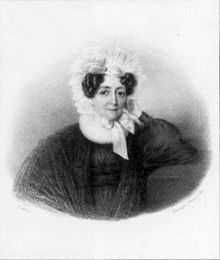Raiding, Austria
| Raiding | ||
|---|---|---|
 | ||
| ||
 Raiding | ||
| Coordinates: 47°34′N 16°32′E / 47.567°N 16.533°ECoordinates: 47°34′N 16°32′E / 47.567°N 16.533°E | ||
| Country | Austria | |
| State | Burgenland | |
| District | Oberpullendorf | |
| Government | ||
| • Mayor | Markus Landauer | |
| Area | ||
| • Total | 13.1 km2 (5.1 sq mi) | |
| Elevation | 253 m (830 ft) | |
| Population (1 January 2013)[1] | ||
| • Total | 817 | |
| • Density | 62/km2 (160/sq mi) | |
| Time zone | CET (UTC+1) | |
| • Summer (DST) | CEST (UTC+2) | |
| Postal code | 7321 | |
| Website | www.raiding.at | |
Raiding (German pronunciation: [ˈʁaɪdɪŋ]; Hungarian: Doborján, Hungarian pronunciation: [ˈdoborjaːn], Croatian: Rajnof) is a small Austrian market town in the district of Oberpullendorf in Burgenland. It is the birthplace of Franz Liszt.
Geography
The municipality lies on Raiding Creek in Middle Burgenland; Raiding is the only borough in the municipality.
History
Raiding was first documented in 1425 as Dobornya.
Like the rest of Burgenland, Raiding belonged to Hungary from c. 900 to 1920/21. After the end of the First World War, Western Hungary was given to Austria with the Treaties of St. Germain and Trianon; there it formed the new province of Burgenland.
In 1971, Raiding was merged with Unterfrauenhaid and Lackendorf into a larger municipality, which was later dissolved. Raiding has been a market town since 1990.
Population
| Historical population | ||
|---|---|---|
| Year | Pop. | ±% |
| 1869 | 713 | — |
| 1880 | 736 | +3.2% |
| 1890 | 880 | +19.6% |
| 1900 | 928 | +5.5% |
| 1910 | 928 | +0.0% |
| 1923 | 976 | +5.2% |
| 1934 | 1,076 | +10.2% |
| 1939 | 994 | −7.6% |
| 1951 | 964 | −3.0% |
| 1961 | 872 | −9.5% |
| 1971 | 846 | −3.0% |
| 1981 | 801 | −5.3% |
| 1991 | 854 | +6.6% |
| 2001 | 836 | −2.1% |
| 2011 | 836 | +0.0% |
Politics
The municipal council has 15 seats with party mandates as follows: SPÖ 9, ÖVP 6, FPÖ 0, Grüne 0, and other lists 0.
Culture and Landmarks
- The Liszt Museum (in the house where he was born)
Business and infrastructure
Viticulture is the main business in Raiding. Other industries there include metal construction and soda water production.
Personalities
- Paul Iby, Bishop of Eisenstadt
- Adam Liszt ∞ Anna Liszt
- Franz Liszt, composer and musician
-
.jpg)
Birthplace of Franz Liszt in Raiding.
-

Anna Liszt, Adam's wife (portrait between 1826 and 1837)
-

Franz Liszt
